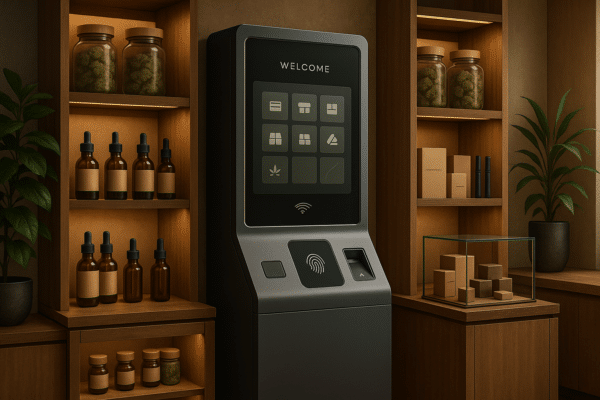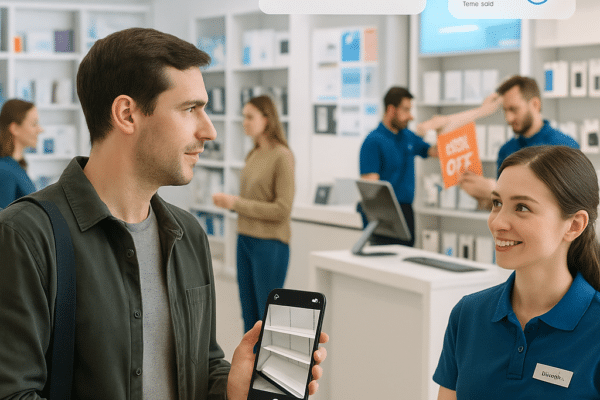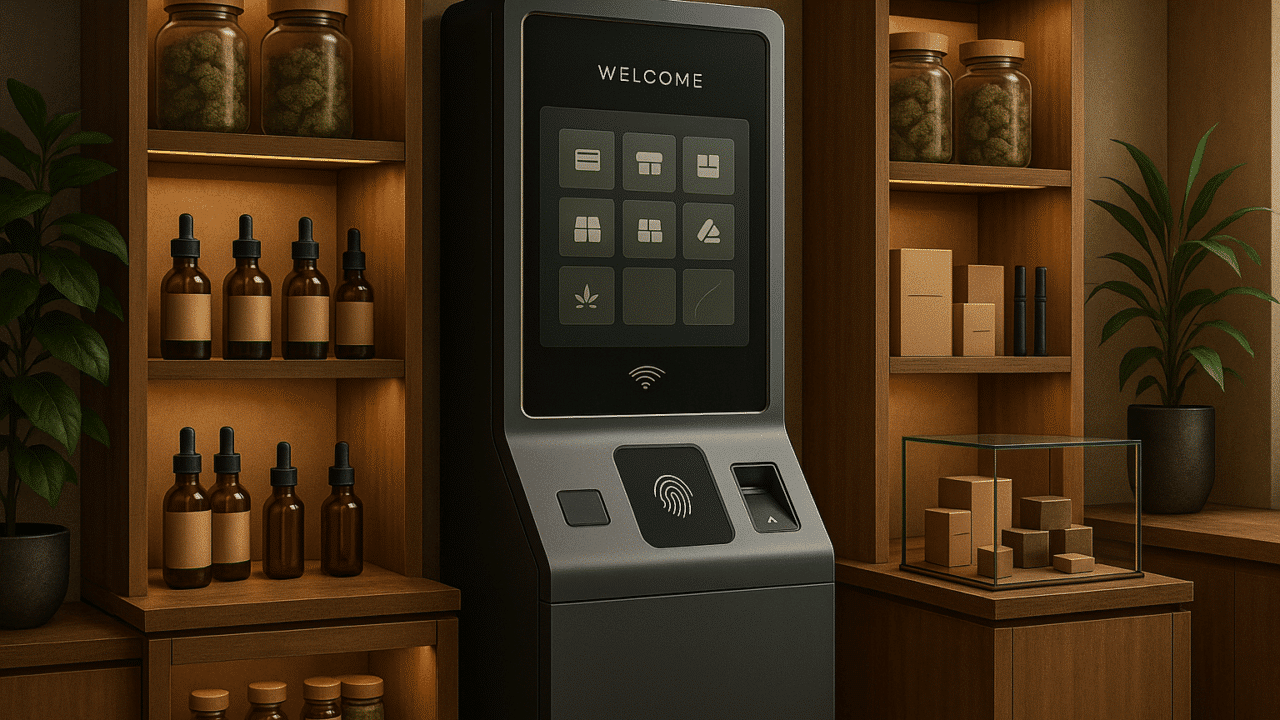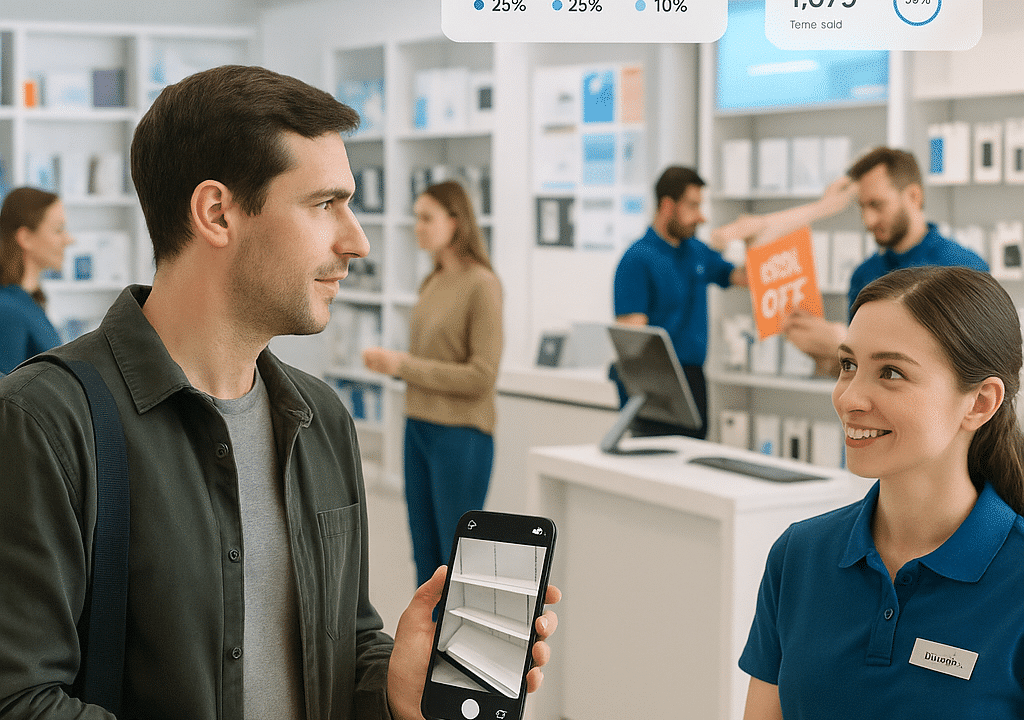
Why You Should Be Using Merchandising Systems
Does managing your retail brand seem like a never-ending jigsaw puzzle? If your answer is yes, consider using a merchandising system. Today’s retail landscape, widened by omnichannel OMS software, requires product companies to stay adept with advanced tools and strategies. Well-designed merchandising system software, equipped with the latest features, can streamline your retail inventory management, price management, and register management, enhancing your overall revenue management.
Understanding Merchandising Systems
The modern retail world is increasingly interconnected, necessitating a robust supply chain management system. At the heart of it all lies a versatile merchandising system. So, what is this system, and how does it work?
Definition and Role of Merchandising Systems
A merchandising system is a business software designed to manage the buying, selling, and promotion of products. Its wide range of functions involve inventory management, demand planning and fulfillment, purchasing, product placement, and pricing, among others.
The natural insight of how retail execution operates can be improved through the use of these systems, allowing businesses to manage their retail product displays more effectively and make timely decisions based on store merchandising insights.
Categories of Merchandising Systems
When it comes to choosing effective merchandising system software, it is crucial to understand the wide range of software available. Depending on your business needs, you might opt for software vendors that offer specialized systems for visual merchandising, product merchandising, mobile merchandising, and even retail store audit systems.
While selecting the right merchandising system software, retailers should only consider software vendors that provide comprehensive feature lists and detailed comparison charts that make it easy to evaluate software and understand competitive advantages. Social media interactions and user reviews may also prove valuable in learning about a system’s user experience.
In the pursuit of excelling at product merchandising, adopting a well-suited merchandising system software becomes indispensable. Whether it’s for a product launch or product marketing, the right system can help retailers effectively manage product placement, product marketing, and retail signage to boost their retail brand equity.
Key Benefits of Using Merchandising Systems
Merchandising systems are an integral part of the retail inventory management landscape. Some of the key advantages to merchandising system software include:
- Enhanced Product Visibility
- Effective Stock Management
- Improved Demand Planning
- Improved Retail Product Displays and Retail Signage
- Increased Sales and Profitability
- Streamlined Operations
- Positive Brand Image
Now, let’s take an in-depth look into how each of these advantages improves the bottom line.
Enhanced Product Visibility
Enhanced product visibility is a significant advantage of utilizing merchandising business software. These systems leverage advanced technologies to optimize the arrangement and presentation of products in-store.
By strategically planning product placement and utilizing visual merchandising tools, businesses can ensure that their products are prominently displayed, catching the eyes of customers and driving increased sales.
This heightened visibility contributes to a more engaging and aesthetically pleasing shopping experience. It can also help retailers promote specific products, such as seasonal items and new product launch items, boosting brand image and customer satisfaction levels.
Effective Stock Management
Effective stock management emerges as a core merchandising advantage when employing merchandising systems in retail operations. Merchandising software facilitates precise monitoring and control of inventory levels, orders, and deliveries. This feature is instrumental in avoiding issues like stock outs and surpluses, ensuring businesses maintain optimal inventory levels at all times.
The ability to track available stock, manage pending deliveries, and gain insights through retail outlook reports is a competitive advantage that can be used to improve demand planning and field team management.
Merchandising systems contribute significantly to operational efficiency, minimizing the risk of inventory-related disruptions and optimizing stock management for increased profitability.
Increased Sales and Profitability
Merchandising systems play a pivotal role in driving increased sales and profitability for retailers. These systems, equipped with advanced price management features, empower retailers to make strategic price adjustments that boost product sales.
Complementing these software capabilities, effective retail signage, product displays, product placement marketing, and meticulous retail store audits contribute to optimizing product merchandising management. The integration of social media further amplifies this impact, driving powerful product launches and marketing campaigns that help retailers reach broader audiences.
Streamlined Operations
Implementing a merchandising system is a strategic move that significantly contributes to the streamlined operations of a retail business. The system serves as a central hub for managing various operational aspects, including price management, inventory management, and register management, yielding an integrated and cohesive approach to retail execution.
By optimizing supply chain management, a solid merchandising system ensures that the right products are available in the right place at the right time. This minimizes the risk of stockouts and surpluses, enhancing brand equity and improving customer satisfaction.
Cross-functional integration is also key, enabling business software compatibility with existing platforms, fostering a streamlined workflow across different departments. The result is well-organized and efficient retail execution that meets the ever-changing demands of the market.
Implementing Efficient Merchandising Systems
Effective implementation of retail merchandising systems is essential for product companies to meet ever-changing customer demands. These systems optimize retail inventory management, enhancing product sales while minimizing costs. Supply chain management adheres to the core merchandising principle of having the right product in the right place at the right time.
One crucial aspect to consider during the software selection process is the compatibility of the merchandising system software with existing platforms. Cross-functional integration is key to achieving a streamlined workflow and maximizing efficiency across different departments. Missteps in this crucial software vendor selection process could lead to operational disruptions and loss of revenue.
Another significant factor that retailers must pay heed to is retail brand equity. By carefully executing product placement marketing strategies, retailers can improve their merchandising efficiency. Understanding how retail product displays and product merchandising management impact consumer behavior is a huge competitive advantage that can massively boost sales.
The Use of Merchandising Software
Merchandising software serves as a one-stop solution for retailers looking to manage a wide range of operational challenges. From price management, inventory management, and register management to revenue management, product placement marketing, visual merchandising and more, retail merchandising software provides an all-inclusive solution that helps retails streamline operations and improve revenue management.
Beyond providing standard basic features lists, some software vendors equip retailers with additional tools for demand planning, product launch planning, and retail store audits. With retail merchandising software, retailers can enhance their product marketing strategies, as well.
For retailers to evaluate software effectively, they should use comparison charts to weigh the core merchandising features of various software platforms. Along with making sure features align with operational needs, factors like user-friendliness, customer support, customizability, and integration capabilities must also be considered. Customer testimonials and reviews can offer valuable insights in this regard.








